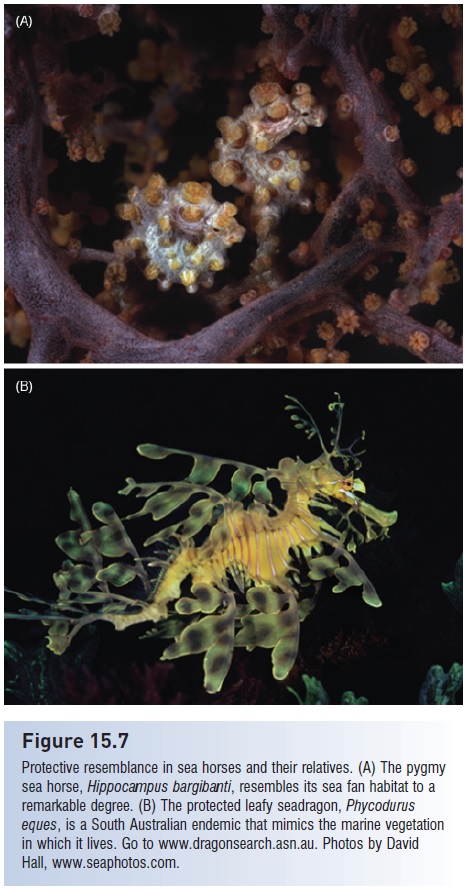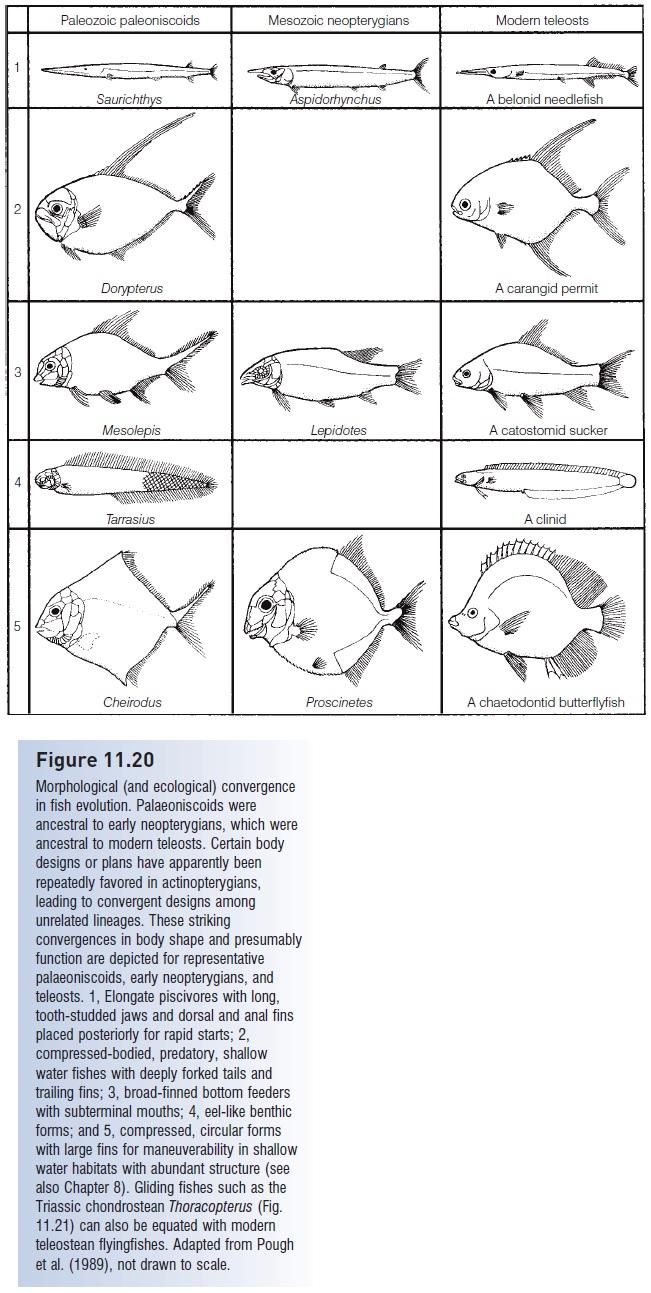Chapter: The Diversity of Fishes: Biology, Evolution, and Ecology: A history of fishes
Subclass Neopterygii - Class Actinopterygii, Advanced jawed fishes : teleostomes (Osteichthyes)
Subclass Neopterygii
“In their great numbers and degree of anatomical diversity, the modern ray-finned fishes may be considered the most successful of all vertebrates” (Carroll 1988, p. 136). Just as improvements in feeding and locomotion may have created competitively superior, primitive actinopterygians, continued evolution of these same traits probably led to the replacement of early actinopterygians by more advanced forms. These descendants, termed Neopterygii (“new fins”), first appear in the fossil record during the Upper Permian. They underwent an initial radiation in the Triassic and Jurassic and then expanded more extensively in the Late Cretaceous. Many of the orders of modern teleostean fishes, the dominant group of bony fishes alive today, are represented in this late Mesozoic radiation. In fact, of the 40 recognized living orders of teleosts, half have fossil records that date back to the Cretaceous, with only about seven orders arising more recently than the Eocene (i.e., are younger than 50 million years old).

Pre-teleostean neopterygians include seven orders, five of which are extinct. Jurassic semionotiforms were quite diverse, radiating into species fl ocks in eastern North America (see Fig. 15.17); some analyses place this order on a direct line to modern gars (Lepisosteiformes). Pycnodon-

The Pachycormiformes, with one family and eight orders of Jurassic to Late Cretaceous fishes, are considered by some to be a sister group to early teleosts. A giant pachycormid, Leedsichthys problematicus, has been discovered in Middle to Upper Jurassic marine deposits in what is now England, western Europe, and Chile (Fig. 11.22). Reconstructions suggest a total length in excess of 15 m, making it the largest bony fish, and perhaps the largest fish, to ever exist (Martill 1988; Liston 2004;). Anatomical features indicate that – like the modern Whale, Basking, and Megamouth sharks – Leedsichthys was planktivorous, another example of convergence of form and function across taxa and time (e.g., Fig. 11.20).
The two extant pre-teleostean, neopterygian groups, the lepisosteiform gars and amiiform Bowfin, are intermediate between palaeoniscoids and teleosts in a number of structures: gars retain the ganoidlike scales of primitive neopterygians, Bowfin have a primitive gular plate under the head, and both groups have identifiably heterocercal tail elements. In most other respects they are quite specialized, as would be expected for fishes that have existed as recognizable taxa since the Mesozoic. They differ sufficiently in derived traits to generally justify their placement in separate orders, although some analyses indicate that similarities among gars, Bowfin, and their fossil relatives justify their placement together in a separate group, sometimes referred to as the division Holostei(e.g., Olsen & McCune 1991). Neither gars nor Bowfin are considered to be on a direct line to the teleosts.

Figure 11.22
Leedsichthys problematicus, perhaps the world’s largest fish ever. This 15 m+zooplanktivorous pachycormid is known from fragments and several partial skeletons discovered in clay deposits from the Middle– Upper Jurassic. After Paul Vecsei, based on an illustration by Bob Nicholls
Related Topics